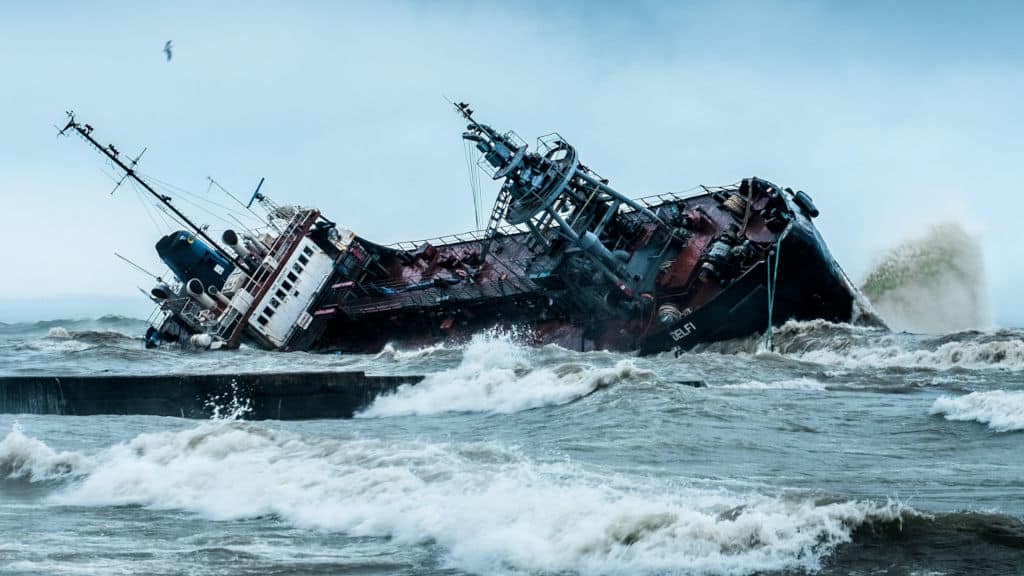Shipwrecks have been occurring since people began using ships. Like every other aspect of life, anything controlled by man will indeed have its downsides. Thus input of man, however, does not separate shipwreck accidents from natural causes, as many of them have been caused by exactly that.
It is dreadful to know that in just one wrong move, a ship could capsize, resulting in all aboard dead, severely injured, and properties lost, which is why it was referred to as tragic in the opening statement.
According to the United Nations, at least 3 million shipwrecks are lying across ocean floors throughout the entirety of human life to date. Just like the Titanic ship of 1912, it begs the questions: what causes ships to sink, what are their effects on human and marine life, and how does legal animation come into play in illuminating these mishaps?
What is a Shipwreck?
A shipwreck could be defined as the intentional or unintentional wreckage of a ship, causing it to either become sunken to the bottom of the water or beached on land. It is the loss of vessels at sea by being swallowed up by the waves due to various uncontrollable reasons or by running into/against another vessel, thing also on the sea or the coast.
There are very many reasons that ships wreck at sea, and these could be by accident, or they could be intended by the people involved. Shipping companies usually take safety precautions to prevent on-shore mishaps in the ocean. However, accidents can still occur due to several reasons. Although collision is the primary cause of shipwrecks worldwide, there are still many other reasons a ship would sink.
Unintentional or natural causes of shipwrecks include flooding, fire outbreak, lousy weather, and grounding (the scraping of the bottom of the ship on other ground or on rocks around the shore, thereby allowing water to seep into the ship and eventually collapse).
Intentional or artificial causes of shipwrecks include using a vessel for target practice, destruction as a result of war, piracy, using a ship as a breakwater structure, poor maintenance of the ship, loss of stability, human nature (fatigue and tiredness), and negligence.

How Bad Is The Aftermath of Shipwrecks?
The significant effect of a sunken ship is the number of lives lost in the process. Sometimes, there could be surviving passengers, and if so, they usually survive with maiming injuries and emotional trauma. Another effect of a shipwreck is the loss of passenger belongings and valuables. Some items could be recovered after the wreck, but many are lost.
Water pollution through oil spillage is not left out among the effects of shipwrecks. Many ships contain volumes of oil capable of causing damage to an area when leaked out. Oil spillage from a shipwreck is a significant threat to marine life and can affect organisms in that area. The spill indirectly affects humans as toxic substances such as polycyclic aromatic hydrocarbons, and heavy metals are passed across from these organisms in the water up the food chain to fish consumed by humans.
How Does Legal Animation Come Into Play in Illustrating Shipwreck Accidents?
Legal animation is fast becoming rampant in today’s legal world. This fast pace is due to how paramount it is and its role in aiding the expert witness’ efforts in the courtroom. It is already a known fact that people would easily remember what they see rather than what they hear. And they would remember what they see and hear even better. Animation can pass across a message that a thousand words cannot and in less time too.
Imagine the hard time jurors would have trying to understand the legal jargon used by the expert to defend his case. With the use of trial exhibits, however, the words coming out of the expert’s mouth are somehow broken down for easy comprehension.
In the case of a shipwreck, legal animation will not fail to reveal hidden details as to what resulted in the ship’s sinking, how it happened, and how it could’ve been prevented, not leaving out causes of death or injuries in cases of such.
For instance, say a shipwreck collided with an iceberg in the course of its journey, visual aids will show in more precise terms what took up the captain’s attention for him to have lost control of the ship, the speed at which the ship was moving, how much force with which it collided with the iceberg, the immediate effect it had on the ship (in details), the passengers and the surrounding ship if any.
Having done this, the jurors, judge and others in the court have information on the events that took place as if they were there themselves.
In conclusion, legal animation as a form of demonstrative evidence isn’t like other forms of animation. It must be created, not for showbiz or fun, but to point out the facts and opinions in a case. Hence, it’s important to make sure legal animation is created by a trial graphics company.






